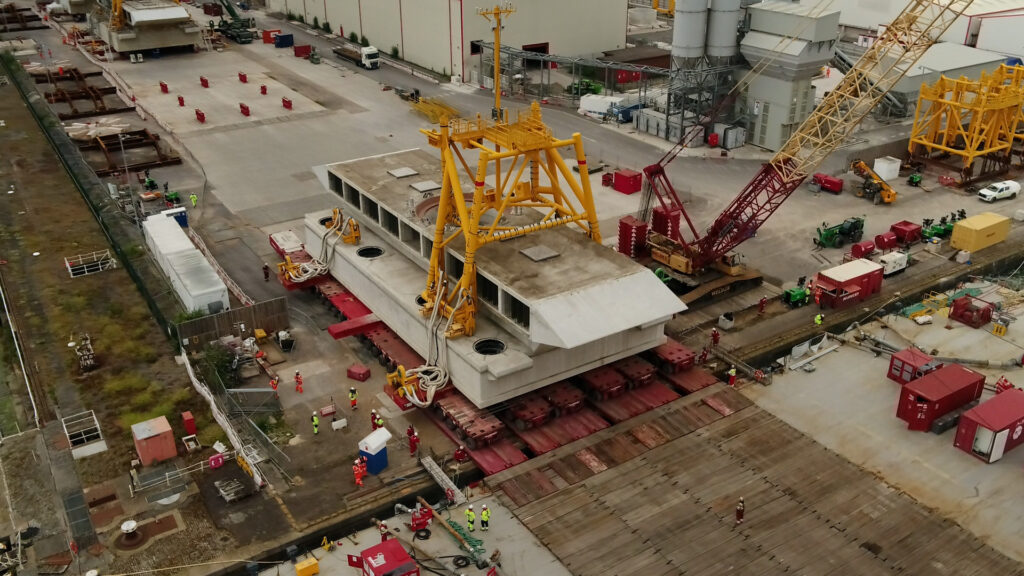A floating crane has arrived at a nuclear power station to lower its new water-cooling system into place on the seabed.
The impressive engineering feat will see the precision placement of 5,000-ton cooling-water intakes at the Hinkley Point C nuclear power station, which is in Somerset, in England, in the United Kingdom.
Construction of the nuclear power plant on the shore of the Irish Sea, on England’s far western shore, began in 2017. It is financed by the Anglo-French EDF Energy company and the China Nuclear Power Group.
Plagued by cost overruns and delays, it is expected to go online in 2027.
Four times longer and twice as high as a double-decker bus, each seawater intake head of the plant will be connected to five miles of tunnels used to circulate cooling water for the new power station under construction in Somerset, in the UK.
The first heads have been carefully loaded onto barges at nearby Bristol Port’s Avonmouth docks, ready to be towed out to meet two floating heavy lift cranes “Gulliver” and “Rambiz” which will work in tandem to lower the structures into place.

Each platform is the size of a soccer field and the cranes have a combined lifting capacity of 7,300 tons.
Hinkley Point C is being constructed by energy giant EDF with an estimated cost of 25 billion to 26 billion British pounds ($29.5 billion to $30 billion).
The four “intake” and two “outfall” heads have been built by Balfour Beatty in Avonmouth.
Each “loading out” operation, carried out by lifting specialists Mammoet, takes several hours, with the water levels being adjusted at the dock, to ensure the barge can receive the load safely and securely.
Ian Beaumont, Project Director of Marine Civils at Hinkley Point C said: “This starts a summer of complex offshore operations, with teams working in collaboration to deliver an incredible feat of engineering. It demonstrates the continued progress being made at Hinkley Point C.”
Roger Frost, Project Director at Balfour Beatty, said: “Today marks yet another exciting milestone in the construction of Hinkley Point C with the arrival of some of the largest heavy lift vessels in the world, on site.
“We are now readying ourselves to successfully complete our next feat of engineering: lowering the head structures, which will support the nuclear power station’s critical water-cooling system, to the very bottom of the Bristol Channel.”

The structures will cap the tunnels which will supply Hinkley Point C’s two nuclear reactors with cooling water.
The heads are big for a reason. Their size means water will enter the intakes slowly, reducing the number of fish entering the cooling pipes.
They are also placed sideways to the tidal flow. In addition, screens and a fish return system will transfer fish back to sea.
Hinkley Point C will be the first power station around the Bristol Channel to have fish protection measures in place.
Produced in association with SWNS.
Recommended from our partners
The post Grand Engineering: Floating Cranes To Install Cooling System For Delay-Prone Nuclear Power Station appeared first on Zenger News.

